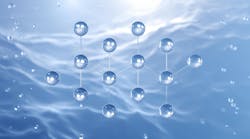The U. S. Department of Agriculture (USDA) and the Environmental Protection Agency (EPA) have announced an expanded partnership to support water quality trading and other market-based approaches that provide benefits to the environment and economy.
“New water quality trading markets hold incredible potential to benefit rural America by providing new income opportunities and enhancing conservation of water and wildlife habitat,” said Agriculture Secretary Tom Vilsack. “Additionally, these efforts will strengthen businesses across the nation by providing a new pathway to comply with regulatory requirements.”
Water quality trading provides a cost-effective approach for regulated entities to comply with EPA Clean Water Act requirements, including water quality-based effluent limits in National Pollutant Discharge Elimination System permits. Trading would allow regulated entities to purchase and use pollutant reduction credits generated by other sources in a watershed. Cost savings and other economic incentives are key motivators for parties engaged in trading.
Water quality trading can also provide additional environmental and economic benefits, such as air quality improvements, enhanced wildlife habitat, carbon capture and storage, and new income and employment opportunities for rural America.
“EPA is committed to finding collaborative solutions that protect and restore our nation’s waterways and the health of the communities that depend on them,” said EPA Administrator Gina McCarthy. “We’re excited about partnering with USDA to expand support for water quality trading, which shows that environmental improvements can mean a better bottom line for farmers and ranchers.”
EPA and USDA are working together to implement and coordinate policies and programs that encourage water quality trading. The Department and the Agency will identify opportunities to work collaboratively to help improve water quality trading programs across the country. Cooperative management and technical assistance will improve resource management and public services, and accelerate implementation.
USDA and EPA will:
- • Coordinate and enhance communications and outreach to states, agricultural producers, regulated sources and interested third parties on water quality trading;
- • Engage expertise across agencies in the review of grants, loans or technical assistance programs focused on water quality trading;
- • Share information on the development of rules and guidance that have the potential to affect water quality trading;
- • Collaborate on developing tools and information resources for states and credit generators to guide decision making, reduce costs in program design and implementation, improve environmental performance, and foster consistency and integrity across regional initiatives; and
- • Co-host a workshop by 2015 to share tools and resources available to assist in stakeholder decisionmaking and opportunities.
The purpose of this policy is to support states, interstate agencies and tribes as they develop and implement water quality trading programs for nutrients, sediments and other pollutants where opportunities exist to achieve water quality improvements at reduced costs.
Source: EPA


